Cards In This Set
| Front | Back |
|
List the two objectives of Phylogenetics
|
A)To understand how one animal evolves from another.
b) To discover the relationships of kinds of animals |
|
Define, "kind"
|
A kind is a phylum. A phylum represents animals having the same fundamental body plan.
|
|
List the two traditions of phylogenetics
|
- Use objective (a) to derive objective (b): This represents the classical approach via the study of morphology and development.
- Use objective (b) to derive objective (a): This represents the modern approach via study of DNA sequence |
|
The Classical approach:
-Main assumption? -Commonly used features? |
-Fundamental aspects of body plan are unlikely to have arisen independently in different lines of descent.
-Features: Body symmetry, coelom presence, mode of coelom formation, segmentation, number of germ layers, early embryonic development, etc. |
|
The Classical approach cont:
-Main trends? |
Main line of metazoan evolution has invovled an increase in complexity through the addition and elaboration of features.
-Radial->Bilaterial->cephalized -Acoelomate->psuedocoelmoate->coelomate -Gastric cavity->through-gut -diploblastic->triploblastic -Cell groups->tissues->organs -Open body cavity->segmentation |
|
Acoelomate->psuedocoelomate->coelomate:
-Define. Provide example. -List features from exterior->interior. |
 -Acoelomate:Have no body cavity at all. Organs have direct contact with the epithelium. Semi-solid mesodermal tissues between the gut and body wall hold their organs in place. E.g. Flatworms. -Psuedocoelomate:fully functional body cavity. Tissue derived from mesoderm only partly lines the fluid filled body cavity of these animals. Thus, although organs are held in place loosely, they are not as well organized as in a coelomate. All pseudocoelomates are protostomes; however, not all protostomes are pseudocoelomates. E.g. roundworm. -Coelomate:have a fluid filled body cavity called a coelom with a complete lining called peritoneum derived from mesoderm (one of the three primary tissue layers). The complete mesoderm lining allows organs to be attached to each other so that they can be suspended in a particular order while still being able to move freely within the cavity. Most bilateral animals, including all the vertebrates, are coelomates. |
|
Describe the evolutionary advance of tissue organization as defined by classical approach
|
 See image |
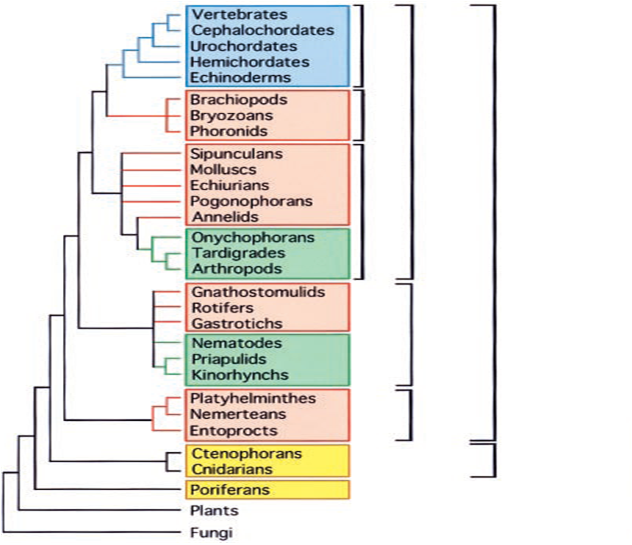 Classical phylogeny (Adouette) -Place the following on the phylogeny: Bilateria, Radiata, Acoelomate, Psuedocoelomate, Coelomate, Protostome, Lophophorate, Deuterostome |
 See image |
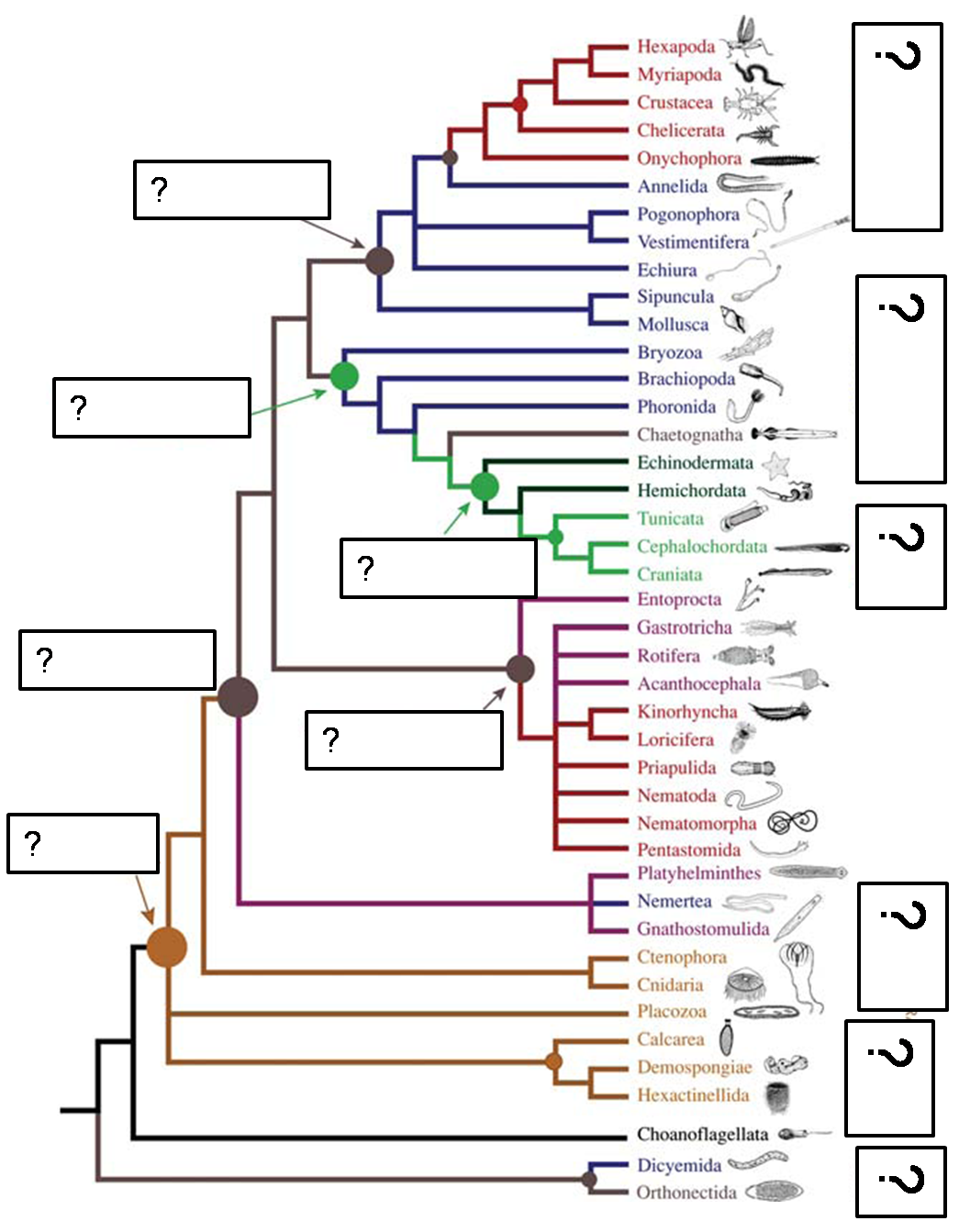 Classical phylogeny (Halanych 2004) -Place following: Metazoa, Bilateria, aschelminthes, deuterostomia, protostomia; Mesozoa, Porifera, coelenterata, chordata, lophophorata, articulata, athropoda |
 See image |
 Main features of classical phylogeny: Porifera -Monophyletic and basal, criterion? |
Cellular grade of construction
|
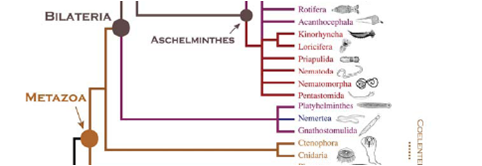 Main features of classical phylogeny: Coelenterata -Sister group of bilateria, criterion? |
Diploblastic tissue grade
|
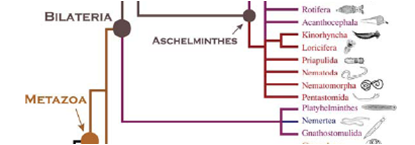 Main features of classical phylogeny: Platyhelminthes -Basal bilateria, criterion? |
Solid body lacking coelom
|
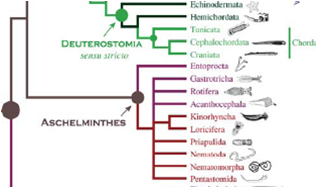 Main features of classical phylogeny: Aschelminthes -Sister group of coelomates, criterion? |
 Pseudocoelomates: Body cavity not lined with mesoderm |
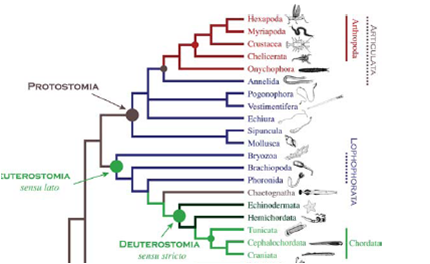 Main features of classical phylogeny: Coelomates -Protostomes and Deuterostomes are the 2 monophyletic groups of coelomates, criterion? |
Mode of cleavage, blastopore fate, coelom formation
|
 Main features of classical phylogeny: Deuterostomes -Echinoderms and lophophorates are deuterostomes, criterion? |
Blastopore fate
|



